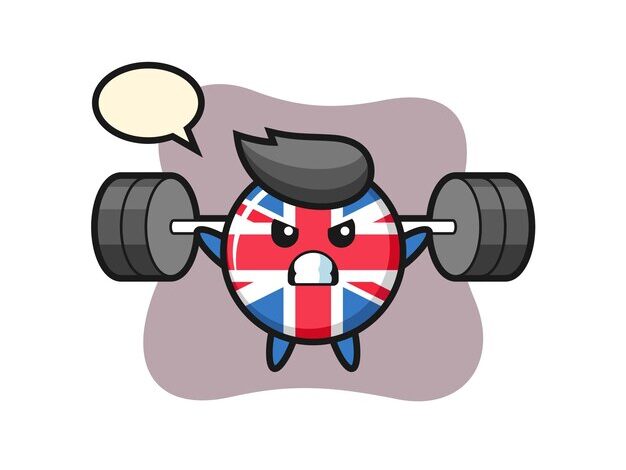Trening po ang skuteczny sposób na naukę fitnessu

English at the Gym: Combining Fitness and Language Learning
Is training in English at the gym just a trend, or is it truly an effective way to learn fitness language skills? Imagine that during your workout you not only build strength and endurance but also improve your English – this combination can revolutionize your approach to learning and health. In this article, we will show how angielski na siłowni (English at the gym) enhances motivation and helps absorb fitness vocabulary, supporting your development on two fronts simultaneously. Together, let’s discover why you should try this method!
What Is Training in English at the Gym?
Angielski na siłowni means conducting workouts using English, linking physical activity with learning vocabulary and expressions related to fitness. During such sessions, participants learn names of sprzęt (equipment), exercises, and practical dialogues useful na siłowni (at the gym).
In English terminology, the word “training” has several equivalents, such as workout, training, practice, or coaching. Each term carries a slightly different meaning, which aids in understanding and precise usage in daily situations.
Educational materials for training in English often provide translations, contextual examples, and explanations of popular phrases. This way, exercising not only improves fitness but enriches your vocabulary and makes communication in English-speaking gym environments easier.
This type of training makes language learning natural and engaging, increasing the effectiveness of both physical and linguistic improvement.
Advantages and Challenges of Training in English at the Gym
Training in English breaks down language barriers, which is vital for improving communication skills in the fitness context. During workouts, you learn specialist vocabulary connected to the siłownia, facilitating the use of international training materials and instructions. Examples of dialogues na siłowni, along with information about godziny otwarcia (opening hours), koszt członkostwa (membership cost), and types of exercises, make learning more practical and efficient.
Key benefits of angielski na siłowni include:
- Enhancing specialized vocabulary necessary during workouts
- Better orientation in the international fitness environment
- Access to English-language guides, tutorials, and videos
- Practical exercise of communication skills in a natural gym context
- Integrating language learning with physical activity, boosting motivation
The main challenges are initial adaptation difficulties. Beginners may struggle with understanding specific terms and instructions given in English. Moreover, availability of materials and classes conducted solely in English can be limited, hindering consistent practice.
These obstacles can be overcome by using a wide range of online resources and regularly practicing at the gym or during sessions with a personal trainer.
What Does „Workout” Mean in English Training?
“Workout” refers to a set of exercises performed during one training session, usually at the gym or at home. This term is frequently used in English to describe physical activity aimed at improving fitness or strength.
Synonyms include “exercise session”, “training session”, or simply “exercise.” Knowing these helps you describe your physical routine in English in varied ways.
Examples of “workout”:
- “I had a great workout at the gym today.”
- “My workout routine includes push-ups and squats.”
- “She prefers home workouts to going to siłownia.”
Common workout exercises and vocabulary:
- Bench press – pressing a barbell while lying on a bench
- Push-ups (pompki) – bodyweight exercises for upper body strength
- Squats – exercises targeting lower body muscles
- Warm-up (rozgrzać się) – preparing the body before the main workout
- Cool-down – stretching and relaxation after exercising
Mastering these terms facilitates both understanding and conducting your own workouts in English.
What Is „Training” in English Gym Context?
Unlike “workout,” training denotes a systematic, planned approach to exercise. It emphasizes ongoing development rather than a one-time physical effort.
In angielski na siłowni, training means creating and following workout plans, tracking progress, and adjusting exercises based on personal goals.
Typical expressions used during training:
- “I’m following my training plan today.”
- “Training regularly helps improve your stamina.”
- “Do you want to join my training session this week?”
Knowing this term is essential for learners as it reflects the broader, goal-oriented nature of fitness routines, beyond individual workouts.
What Is „Coaching” as a Form of English Gym Training?
Coaching involves working with a personal trainer who offers personalized guidance and motivation. It addresses your specific needs and helps improve fitness more effectively.
In English training contexts, coaches use simple, tailored expressions that help understanding and communication during exercises.
Benefits of coaching:
- Individualized approach considering goals and abilities
- Constant support and motivation boosting training efficiency
- Practice of conversational English with useful gym phrases, e.g., “Let’s focus on your form” or “Repeat the exercise slowly.”
These make the gym experience more natural and encourage consistent training po angielsku.
How to Conduct Training in English?
Preparing a Training Plan in English
A successful training plan combines fitness and language goals. Decide if your priority is learning gym-related vocabulary or conversational skills during zajęcia fitness (fitness classes).
Choose a program that matches your language level and preferences, using resources that offer clear session plans—such as English-language strength training or cardio workouts. Video materials integrating language practice and exercise moves are very helpful.
Selecting Useful English Phrases and Vocabulary
Focus on key expressions like “to join a gym,” “personal trainer,” “workout plan,” or “fitness class.” Effective memorization techniques include making flashcards, repetition, and role-playing dialogues.
Practicing dialogues with reception staff or trainers prepares you for real-life communication na siłowni.
How to Understand English Exercise Instructions?
Working with dialogues between clients and gym staff enhances listening skills. Use audio and video materials with typical commands like:
- “Do three sets of ten reps.”
- “Keep your back straight.”
- “Increase the weight gradually.”
Repeated practice boosts comprehension and confidence during workouts in English.
Differences and Similarities Among Workout, Training, Practice, and Coaching
In angielski na siłowni, several terms describe physical activity but carry different meanings:
| Terminology | Meaning | Typical Context |
|---|---|---|
| Workout | A specific set of exercises in one session | Daily exercise routine (“I did a 30-minute workout.”) |
| Training | Systematic process over time toward fitness goals | Planned sessions (“She is following a marathon training plan.”) |
| Practice | Repeating skills to improve technique | Sports requiring accuracy (“Practice your form to avoid injury.”) |
| Coaching | Personalized training with a coach | Trainer support and motivation |
Knowing when to use each enhances understanding of fitness materials and communication at the gym.
How to Use English Gym Training in Everyday Learning and Fitness?
To combine language learning with regular exercise, actively use English fitness vocabulary during workouts. Phrases like “How many reps?”, “Set your timer,” or “Increase the weight” help you become familiar with everyday gym English.
Explore alternative fitness options such as outdoor gyms or online training. Exercising outdoors while listening to English podcasts or apps naturally integrates language learning. Online classes provide accessible materials to learn both terminology and workout techniques.
Regular use of new vocabulary builds confidence and improves communication in international fitness environments.
Practical daily tips:
- Learn and apply new fitness words during your workout.
- Use applications and platforms offering English workouts.
- Practice outdoor training with English instructions.
- Discuss training sessions in English with friends or trainers.
- Engage in short dialogues and repeat phrases during rest intervals.
Angielski na siłowni is not only a way to improve physical fitness but also an effective method to enhance your English skills in a fitness context. Understanding differences between workout, training, and coaching helps customize your training plan. By breaking language barriers and integrating English regularly, you strengthen both body and mind.
FAQ
Q: What are the most common English translations of the word “trening”?
A: The main translations are workout, training, practice, and coaching. Each differs in meaning and use related to fitness and learning.
Q: What is a “workout” in training English?
A: A “workout” is a set of exercises performed in one session, like bench press, push-ups, or squats—referring to a single physical effort.
Q: How does “training” differ from “workout” in English?
A: “Training” means regular, planned exercise aimed at skill development, while “workout” is a single exercise session. “Training” implies progression over time.
Q: What is “coaching” in English gym training?
A: “Coaching” is working with a personal trainer who provides individualized advice, motivation, and a tailored exercise plan supporting both fitness and language learning.
Q: What benefits does training in English offer?
A: Training in English helps overcome language barriers, expands fitness vocabulary, and opens access to international educational resources and gym dialogues.
Q: What are challenges of training in English?
A: Early obstacles include mastering specialized terms and limited availability of English-only fitness materials.
Q: How to practically conduct training using English?
A: Prepare a training plan, learn key phrases like “to join a gym” or “personal trainer,” and practice typical gym dialogues to improve understanding and communication.
Q: Which expressions and vocabulary are essential for English training?
A: Key terms include workout, training, coach, personal trainer, lift weights, cardio, repetitions, and phrases like “How many reps?” or “Let’s warm up.”
Q: What are differences and similarities between workout, training, practice, and coaching?
- Workout: single session of exercises.
- Training: consistent, planned exercise routine.
- Practice: repetition for skill improvement.
- Coaching: guided training with a coach.
Q: How to use English training in daily learning and fitness?
A: Combine physical exercise with learning conversational phrases and vocabulary through gym workouts, online classes, and outdoor training for effective language and fitness growth.




